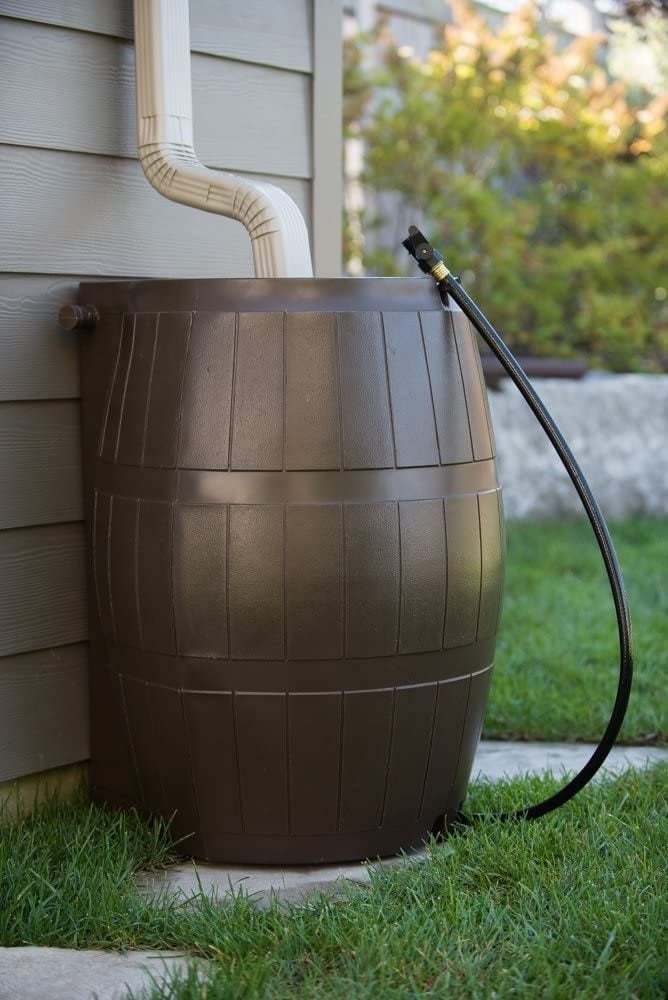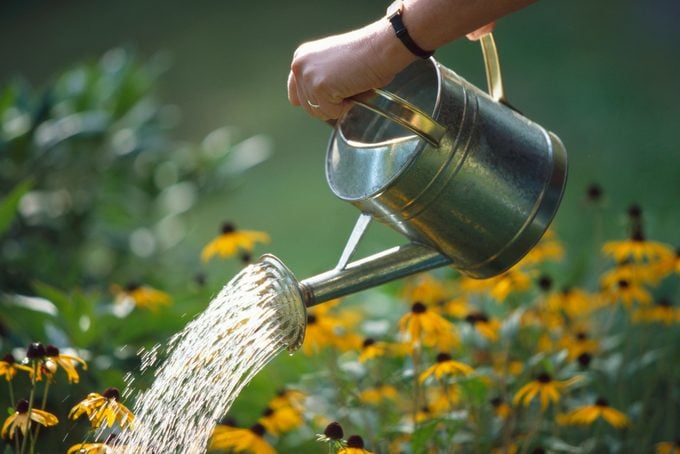15 Ways to Conserve Water in the Garden
Updated: Aug. 01, 2022
When rain is scarce, gardeners need ways to conserve water. Follow these tips to use water smartly and still keep your plants happy and healthy.
Our editors and experts handpick every product we feature. We may earn a commission from your purchases.

It’s possible to reduce outdoor water use by 20 to 50 percent with a few easy changes. To keep your water bill low and plants looking perky, try these ways to conserve water from Birds & Blooms readers, the National Garden Bureau and Gardener’s Supply Company.
These are the best watering cans for every garden.
Improve the Soil and Use Compost to Conserve Water
Use organic matter, such as compost, chopped-up leaves or composted manure, to supplement your soil. These organic materials increase the water-holding capacity of soil. A good rule of thumb is to add 1 inch of compost per year.
These 15 water-wise plants thrive during dry spells.
In the planting hole, mix 1 part compost to 1 part soil. The compost will help the soil hold onto water for a longer length of time while not allowing it to become waterlogged. Compost also adds nutrients to the soil. Making your own compost is easy to do or you can purchase it at your local nursery. Here’s how to build a DIY compost bin.
Water Plants Deeply in the Early Morning
Give your plants a solid soak. While sprinklers get the job done, a soaker hose is even better. It applies the water directly to the soil by the roots, so up to 90 percent is actually available to plants.
Believe it or not, the time of day can make a difference as a way to conserve water. By watering in the cooler period of morning, there is less evaporation occurring. Avoid watering in the afternoon, when much of the water can be lost to evaporation. It is also wise to avoid watering in the evening when the moisture can foster fungal diseases.
Just Add Mulch
Spread mulch. It prevents weeds from growing and soaking up all of the water you add to the planting area. A layer of mulch provides the most bang for your buck. Organic mulches are best. Grass clippings free of weedkillers, evergreen needles, shredded bark and fall leaves will adds nutrients to the soil over time.
Once you water plants, moisture begins to immediately evaporate from the soil’s surface. By adding a layer of mulch, you help conserve water by limiting the amount lost to the atmosphere. In addition, mulching helps to keep the soil moist longer while keeping soil temperature cooler in summer and warmer in winter.
Psst—If you see white stuff on your mulch, this is what it means.
Save Rainwater

When rain does fall, it is important to harvest and direct it toward your garden instead of allowing it to runoff. Be extra frugal and capture all of the free water you can. Place rain barrels or a cistern at your downspouts. A 1,000-square-foot roof collects about 625 gallons of water from just 1 inch of rain.
You can also conserve and collect rainwater by creating rain gardens.
Group Plants with Similar Watering Requirements Together
Know the characteristics of your planting site, such as the amount of sun and shade it receives, soil type and wind conditions. Make a plan to group plants with similar needs, like these drought-tolerant plants.
Another drought tolerant garden tip: place higher water use plants toward the house where they can be watered easily. Group more drought tolerant plants on the the outer edges of the landscape.
Read Plant Tags and Use Native Plants When Possible
Wouldn’t it be nice to have a garden filled with plants that needed little to no supplemental water? Some plants get all the water they need from rain, so once established, they require less attention. If you’re looking for perennials suited for drought conditions, your best bet is usually native plants that are adapted to your climate and soil type.
Native plants are specially adapted to survive on natural rainfall amounts. In times of drought, they may need some supplemental water, but not as much as those that are not adapted to your local climate. Another bonus is that native plants are generally more pest resistant, need little to no fertilizer and are lower-maintenance than those that aren’t native. If you decide to plant some non-natives in your landscape, be sure that they are well-adapted to your climate without needing excess amounts of water.
Plant native trees that attract birds.
Remove the Competition
Keep up with garden chores. Healthy plants mean less work! When you stay on top of tasks such as weeding, thinning and pruning, you add to the health of your plants and, in turn, need to water less frequently.
Allow Grass to Grow Longer
By letting your grass grow to a height of 3 inches, it will shade the roots. This helps conserve water by decreasing the amount of evaporation. In addition, a higher mowing height will also help keep weeds from growing.
Decrease the Amount of Grass in Your Landscape
A lawn uses a large amount of water—an average of 55 inches a year. Beds filled with perennials will use much less water and provide a welcome spot of color in the landscape. If you opt to take out part of, or even your entire lawn, there are countless ways to create a beautiful garden that needs little to no supplemental water.
How often should gardeners water plants in winter?
Use Porous Landscaping Materials Instead of Concrete
Avoid concrete if you want to conserve water. Rain water can seep through porous materials, such as gravel or sand-set stepping stones, thereby watering nearby plants.
Follow these tips for watering container gardens.
Readers Share Ways to Conserve Water in the Garden

Birds & Blooms readers pass on their inventive ways of keeping plants happy without turning the spigot.
“I haven’t hooked up my garden hose for years. Instead, I catch excess water with a bucket in my shower, capture condensation from my air conditioner and save water from when I wash produce,” Lois Brumfield says.
“Recycled water from a dehumidifier helps me water my plants,” Nikki Conell says.
“When I fill the kiddie pool for my grandchildren, I don’t dump it out after. Instead, I fill all my watering cans and buckets with the leftover water,” Kathleen Norton says.
“I have three rain barrels that I use all spring and summer to water my ornamental garden plants, to fill the bird baths and fountains, and sometimes even to wash my hair!” Anita Allen says.
“I water each plant individually and deeply instead of mass drenching my gardens to save water,” Charlotte Estabrook says.




















